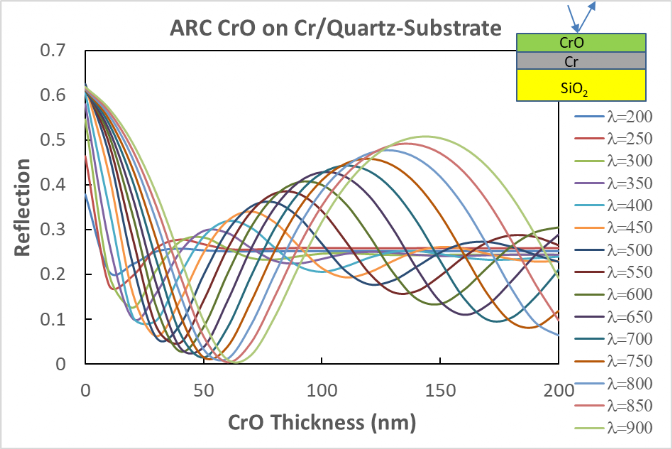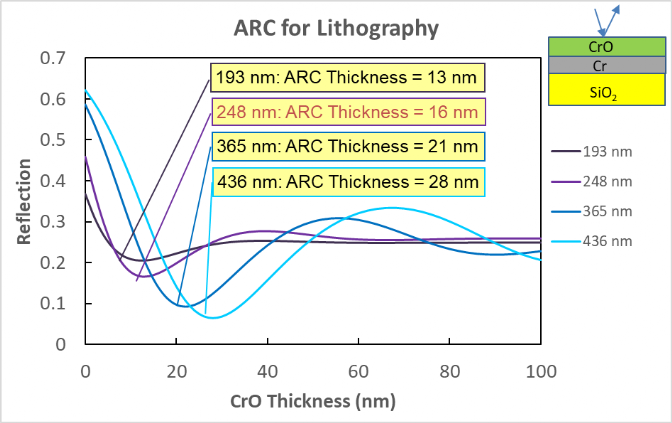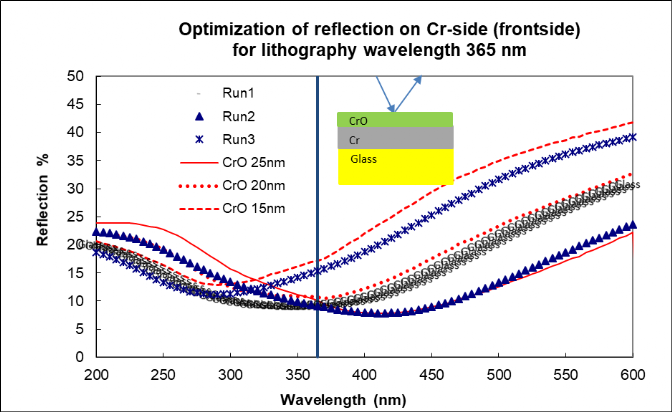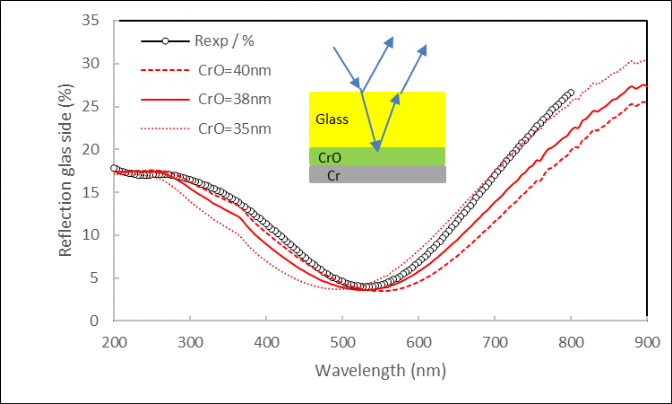Spectral reflection overview
Reports
Generally, Antireflective Coatings (ARC) are of great interest to a wide variety of industries and applications, particularly for special coatings for microelectronics, optics, flexible displays, bio-engineering, solar cells and solar thermal equipment, as well as decorative coatings. Thin film coatings can change the electrical, mechanical and/or optical properties of a solid base material. Some common examples are scratch-resistant coatings for eyeglasses, anti-reflective coatings for lenses, windscreens and transparent conductive coatings for flat-panel displays.

Fig. 3.1. Antireflective coatings (ARC) of chromium for optical components. The optimized ARC, reflection minimum, for different wavelengths is shown.

Fig. 3.2. Special chrome oxide coatings for lithography wavelengths.

Fig. 3.3. Experimental optimization of CrO coating (Run1-3) and simulation (red) results for the lithography wavelength 365 nm.

Fig. 3.4. Optimization of CrO ARC coating by using simulation (red) and the experimental results for glass side reflection minimization at l=550 nm.

